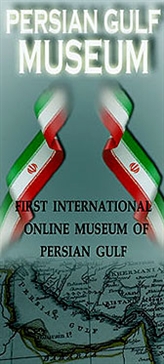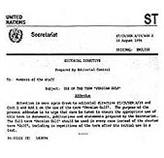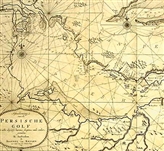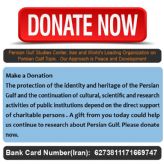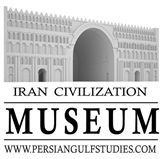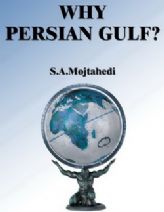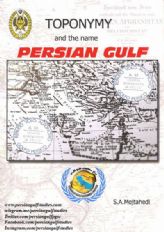Persian Gulf History
Golfe Persique History
Persian Gulf bordering Iran (Persia), Iraq, Kuwait, Saudi Arabia, Bahrain, Qatar, United Arab Emirates and Oman, with an area of 240,000 km, and a maximum depth of 90 metres, while the average depth is 50 metres. In Western countries it is normally referred to as the Persian Gulf.
The length is 1,000 km, and the maximum width is 370 km. To the south, the coast line is low, while the coast on the Iranian side is mountainous. The temperatures are high, and the salt level is as high as 40%, which is the result of higher evaporation than supply of fresh water. The main fresh water resource is from Iraq, with the Shatt El Arab, the confluence of the rivers Euphrates, Tigris and Karun.
Through the Strait of Hormuz, the Persian Gulf is connected to Gulf of Oman. There have been serious incidents that have affected the environment of the Persian Gulf in recent years. While oil spills from the heavy traffic of oil tankers over years have been serious enough, oil spills from 1983, during the Iran-Iraq War, and in 1991, during the Persian Gulf War, have been catastrophic.
The Persian Gulf is a 600-mile-long arm of the Indian Ocean, which separates the Arabian peninsula from Iran (Persia). Since the 1960s some Arab states have referred to this body of water as the Arabian Gulf. The Persian Gulf is surrounded by Iran (Persia), the predominant state in terms of population, and seven Arab states: Iraq, Kuwait, Saudi Arabia, Bahrain, Qatar, the United Arab Emirates and Oman. The Persian Gulf is bounded by the Shatt al-Arab waterway in the north, which forms the frontier between Iran and Iraq, and the Strait of Hormuz in the south, which connects it to the Gulf of Oman and the Indian Ocean. The strait, which is 34 miles wide at its narrowest point, is the choke point of the Persian Gulf; through it pass the oil tankers which fuel the world economy.
Six of the eight littoral states were created in the 20th century, and only Iran (Persia) and Oman have long histories as separate entities. The Persian Gulf states today contain some 118 million people, representing many ethnic, religious, linguistic and political communities. A major cleavage is that between Persian and Arab. Arabic, a Semitic language, is spoken in Iraq and the states of the peninsula. Iran (Persia) has an Aryan heritage, and its main language, Persian (Farsi), is an Indo-European language. Muslims of the Shiite sect predominate in Iran (Persia), Iraq and Bahrain, whereas Sunni Muslims form the majority in other Persian Gulf states.
The Persian Gulf, while important as an international trade route connecting the Middle East to Africa, India and China, has its own distinct cultural identity. The Persian Gulf has historically been an integrated region characterized by constant interchange of people, commerce and religious movements. Before the modern era, peoples of the region shared a maritime culture based on pearling, fishing and long-distance trade, and many tribes moved freely back and forth. The Persian Gulf's orientation was outward, and its seamen maintained close ties with the Indian subcontinent and East Africa. As in many parts of the Middle East, society in the Arabian peninsula was tribally organized and tribes were the key to forming modern states. Until the 20th century, tribes also played an important political role in Persia and Ottoman Iraq.
The modern strategic importance of the Persian Gulf dates from the mid-19th century, when three great empires confronted each other there: British India, Tsarist Russia and Ottoman Turkey. The British established political control over much of the Persian Gulf in the early 1800s and kept it for 150 years, establishing a tradition of outside involvement that persists today. Britain did not establish formal protectorates (as in the case, for example, of Egypt), but did enter into treaties with local shaikhs offering them protection in return for control over their foreign policy. In 1899 Kuwait, then considered a dependency of the Ottomans, was brought into this system. After World War I, the political map of much of the Middle East was redrawn as the Ottoman Empire was replaced by modern states, including Turkey, Iraq and Saudi Arabia. The small Arab shaikhdoms on the western shore of the Persian Gulf were under British protection until 1971 (in the case of Kuwait, 1961). Iran (Persia) was never a colony, and for much of the 19th and 20th century Britain competed with Russia for influence there.
The present importance of the Persian Gulf stems from its massive energy deposits. Sixty-five percent of the world's known oil reserves are located in the Persian Gulf countries, which produce over a third of the world's daily output. (By comparison, North America holds 8.5 percent of the world's reserves.) Saudi Arabia ranks first in reserves, with 261 billion barrels, followed by Iraq (100 billion), the U.A.E. (98 billion), Kuwait (96.5 billion), and Iran (89 billion). The Persian Gulf is also rich in natural gas, with Iran and Qatar holding the world's second and third-largest reserves, respectively.
Over the past century, the traditional way of life in the Arab states has been irrevocably changed, due in large measure to the British intervention and the rise of the oil industry. The common bonds of the Persian Gulf peoples have been overshadowed by political differences between the new states. The modernization process, which lasted for centuries in the West, has been compressed into decades, putting great stress on traditional societies.
Because of the way in which the modern states were formed and boundaries arbitrarily delimited, in many cases tribal and family loyalties, and religious, linguistic and ethnic identities are more important than state citizenship. These factors, along with economic disparities, the rise and fall of oil prices, political Islam and the influence of revolutionary Iran (Persia), as well as the disruptive policies of Iraq, have contributed to the present-day tensions in the region.
